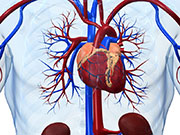Lowest risk of atrial fibrillation hospitalization for amiodarone, greatest risk for dronedarone
WEDNESDAY, April 1, 2015 (HealthDay News) — For younger patients with atrial fibrillation, amiodarone is associated with the lowest risk of atrial fibrillation hospitalization, while dronedarone has the greatest risk, according to a study published online March 31 in Circulation: Cardiovascular Quality and Outcomes.
Nancy M. Allen LaPointe, Pharm.D., from Duke University in Durham, N.C., and colleagues examined the correlations between different antiarrhythmic drugs (AADs) and hospitalization. The authors used MarketScan claims data to identify 8,562 patients with atrial fibrillation (median age, 56 years) who received their first AAD prescription within 14 days after their first atrial fibrillation encounter.
The researchers found that the risk of atrial fibrillation hospitalization was increased with dronedarone versus Class Ic, amiodarone, and sotalol (hazard ratios [HRs], 1.59, 2.63, and 1.72, respectively). The risk was lower with amiodarone versus Class Ic and sotalol (HRs, 0.68 and 0.63, respectively). Compared with Class Ic, amiodarone was associated with reduced risk of cardiovascular hospitalization (HR, 0.8) but not with non-atrial fibrillation cardiovascular hospitalization (HR, 1.26). No difference was seen in all-cause hospitalization between amiodarone, Class Ic, and sotalol.
“Our findings indicate that dronedarone use and associated outcomes in clinical practice may differ substantially from the precedent clinical trials,” the authors write. “Additional research is needed to better understand the association between AADs and risk of hospitalization.”
Several authors disclosed financial ties to the pharmaceutical industry.
Copyright © 2015 HealthDay. All rights reserved.








